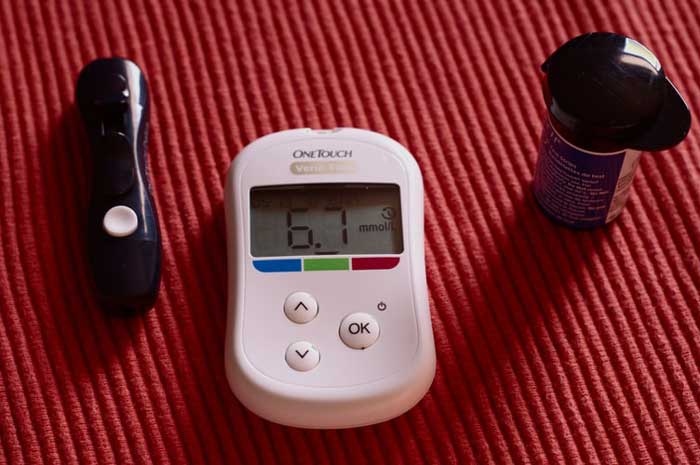Signs of Diabetes in Children
Diabetes in children is a sensitive issue, which we try to avoid in every possible way. If doctors diagnosed a child with diabetes, the first thing to know is that you are not alone with this problem. It’s a sad and frightening fact, but the UK ranks 4th in the world according to the number of type 1 diabetes patients. Moreover, this indicator is constantly growing.
Diabetes occurs in children and adolescents of all age groups, while almost all cases of diabetes in children under 10 years of age are type 1 diabetes. Your confusion, anger, grief, and anxiety are entirely natural – most likely, your child experiences the same feelings. He will need to turn to someone for advice, and you can become that person. So you need adequate information to help your child live through the adaptation period.
It is your responsibility as a parent to monitor, regulate and control the blood sugar level of the child around the clock. At first, this may seem like an unrealistic task, but after receiving the necessary knowledge and learning how to perform daily procedures, your child will be able to continue to live a healthy and active life. The right information, support, and tools will enable you to manage your diabetes based on your child’s lifestyle and not on the common recommendations.
Although the symptoms of type 1 diabetes are similar to those of its twin, type 2 diabetes, there are differences in the underlying symptoms and the way the diagnosis is made. Type 1 diabetes occurs when the pancreas stops producing enough insulin, so the symptoms can develop quickly enough – within a few days or weeks.
In children, this happens faster than in adults, which is why adult patients are sometimes mistakenly diagnosed with type 2 diabetes. If you notice any signs and symptoms of type 1 diabetes in yourself or any of your loved ones, regardless of age, you must immediately seek medical help – without treatment, the disease can be fatal.
The most common symptoms of type 1 diabetes include:
- excessive thirst;
- frequent urination;
- weight loss;
- fatigue;
- decreased attention span;
- blurred vision;
- itching and dry skin;
- vomiting;
- diabetic ketoacidosis is a very dangerous symptom of undiagnosed diabetes.
This is a life-threatening condition caused by high blood acetone.
How does diabetes manifest itself?
Many of these symptoms often appear in other diseases, but the onset of diabetes can be unexpected and abrupt. Knowing the most common symptoms can help you determine whether medical attention is needed. In about 25% of young patients with type 1 diabetes, the diagnosis cannot be made until the signs of diabetic ketoacidosis (DKA) 1 appear, which is a life-threatening condition.
Diabetes UK, a leading diabetes research organization in the UK, offers a descriptive method, also known as diagnosing type 1 diabetes with 4 “T” words. This is a simple and easy way to diagnose it and start treatment as soon as possible.
Frequent Bathroom Visits
If your child suffers from bedwetting and has to use the toilet quite often during the day, this may be an early sign of diabetes. Frequent going to the toilet in adults can also indicate diabetes.
Unusual Thirst
In children and adults, the consumption of large amounts of water can be associated with high activity and intense sports. But if you notice that you or your child continue to feel thirsty even when there is no physical activity, this can be a warning signal.
Tiredness and Fatigue
Since patients with type 1 diabetes lack a key component (insulin) to convert glucose into energy, they often feel tired due to lack of energy.
Thinning
In the absence of insulin, the body begins to break down its own muscles and stored fat. This makes it possible to obtain an alternative source of energy because glucose does not come from the bloodstream. Therefore, in the absence of timely diagnosis and treatment in patients with type 1 diabetes, sudden and unexpected weight loss often occurs.
Latent Autoimmune Diabetes in Adults (LADA)
Type 1 diabetes can occur at any age. It is often diagnosed in childhood, but a specific form of type 1 diabetes, known as LADA diabetes (latent autoimmune diabetes in adults), may also occur in adults at a later age.
WHAT CAUSES THESE SYMPTOMS?
Due to the lack or complete absence of insulin in the body, the blood sugar (glucose) level continues to increase with each intake of carbohydrates, under stress and other factors. Trying to get rid of glucose, the body excretes it with urine, which removes additional water from the kidneys. For this reason, excessive urination and thirst occur.
Insulin deficiency prevents the body from directing glucose from the bloodstream to the cells. Needing energy, the body begins to break down fat, resulting in ketone bodies. In large numbers, ketone bodies are toxic and can cause diabetic ketoacidosis (DKA). This is a very dangerous symptom requiring immediate treatment.
It should be admitted that not everyone is aware of what ketone (acetone) bodies are, so we will analyze their role in diabetes below.
If the body lacks insulin, it cannot convert glucose into energy.
Without natural energy, the body begins to break down fats – an alternative source of energy.
Ketone bodies are an acid that is produced when the body begins to burn its own fats.
After the mechanism of creating ketone bodies is launched, their number in the bloodstream is growing rapidly.
Since ketone bodies cannot penetrate the cell when there is no insulin, they enter the urine through the kidneys.
The presence of these by-products that poison the body can lead to serious complications.
Knowing the causes, signs and symptoms, as well as the treatment methods, you can avoid the occurrence of diabetic ketoacidosis.
SYMPTOMS OF DKA
DKA is most often found in patients with type 1 diabetes, but it can also occur in type 2 diabetes. Therefore, if you or your nearest person has diabetes, knowing what the signs of acetone in the body may be will help you identify diabetic ketoacidosis as soon as possible. DKA needs to be treated as a serious emergency, so it is especially important to recognize the symptoms as soon as possible and act as quickly as possible.
Symptoms of diabetic ketoacidosis:
- Blood / urine ketone bodies
- Vomiting
- Abdominal pain
- Altered breathing
- Cardiopalmus
- Dehydration
- Unusual odor from the mouth
- Confusion or disorientation
- Collapse or loss of consciousness
- Coma





